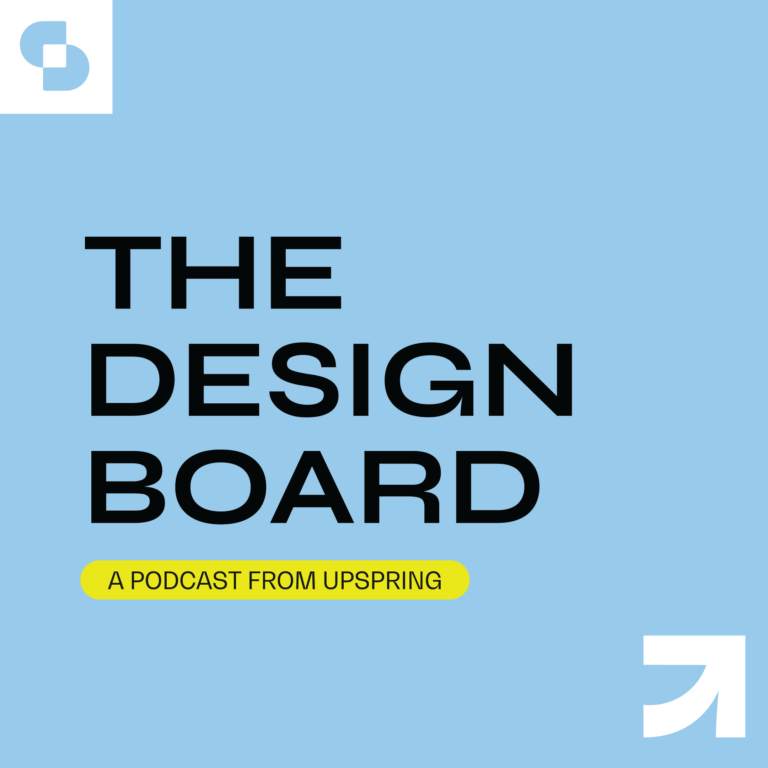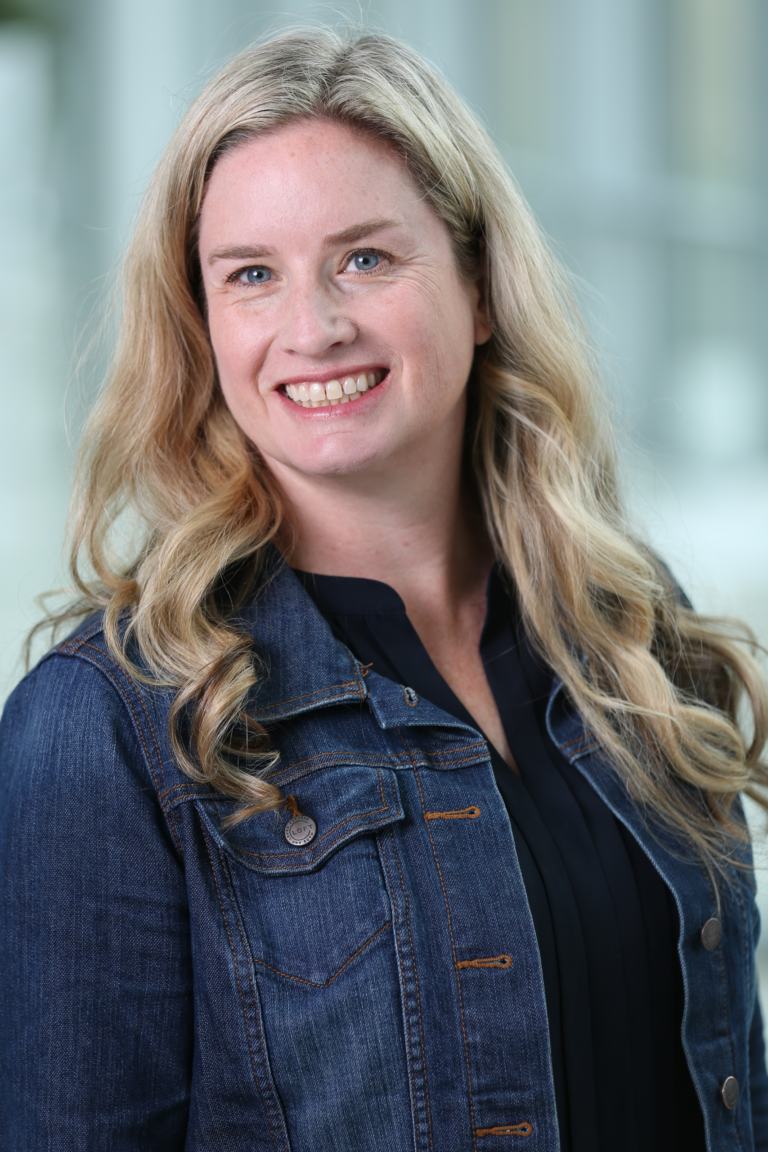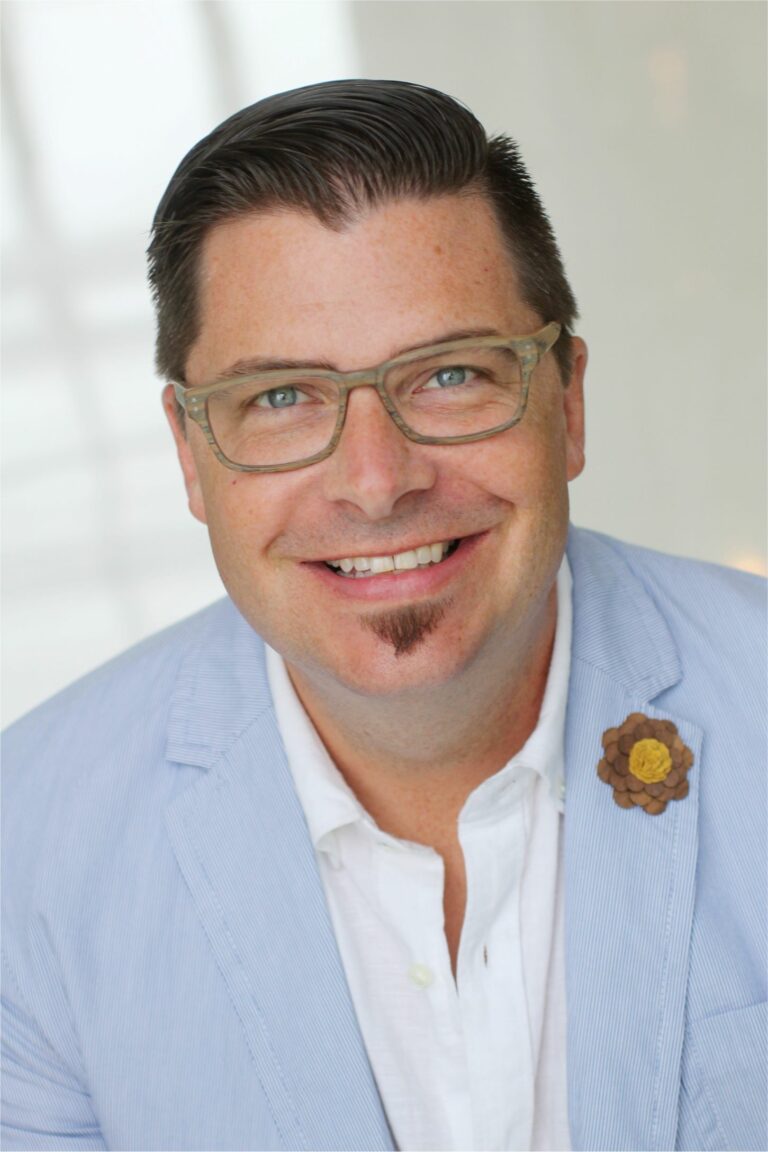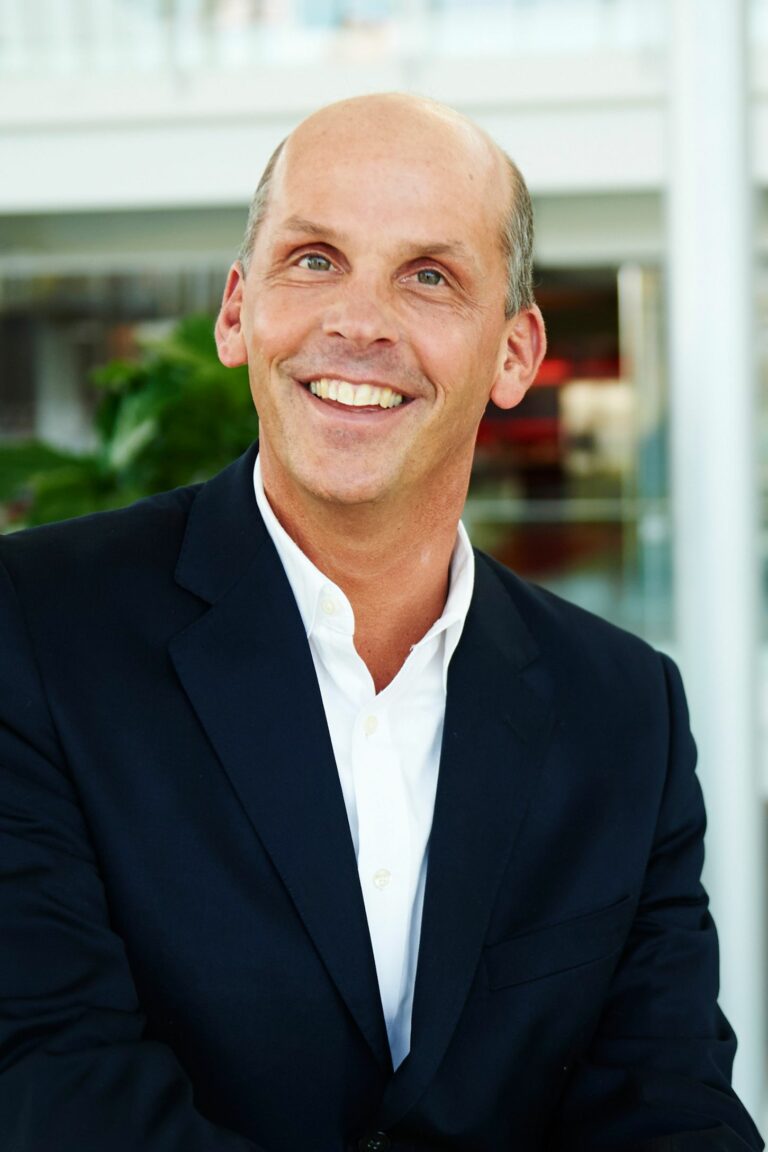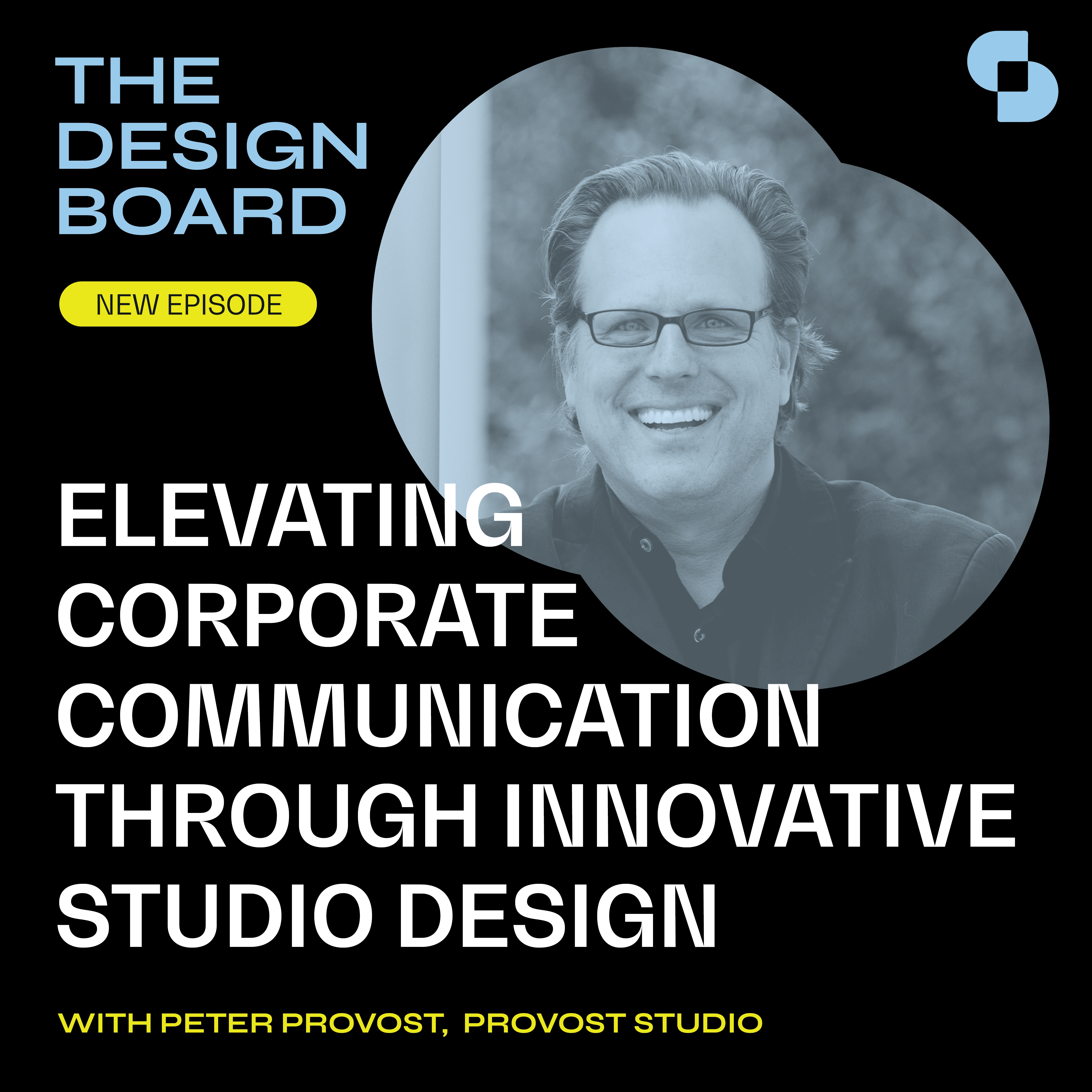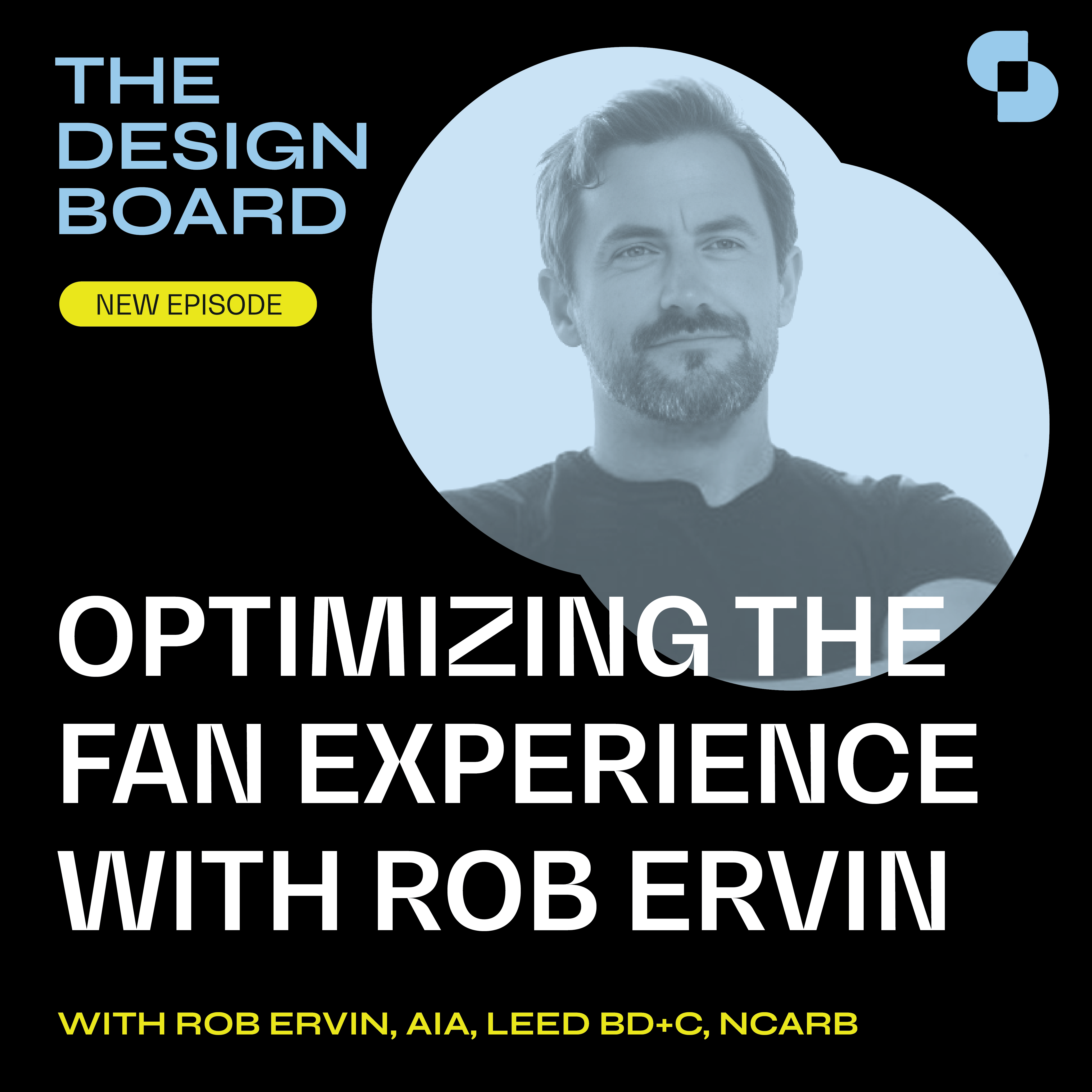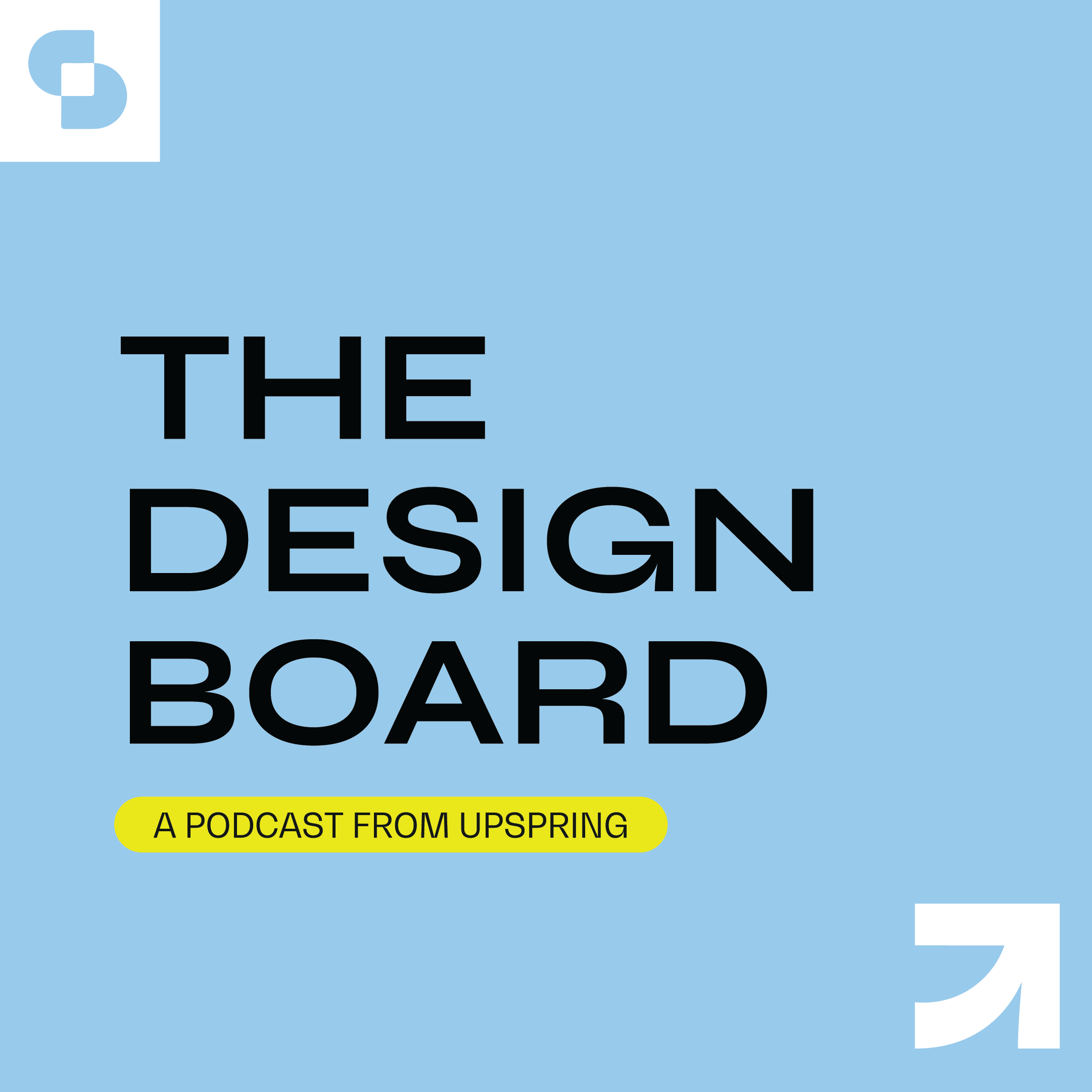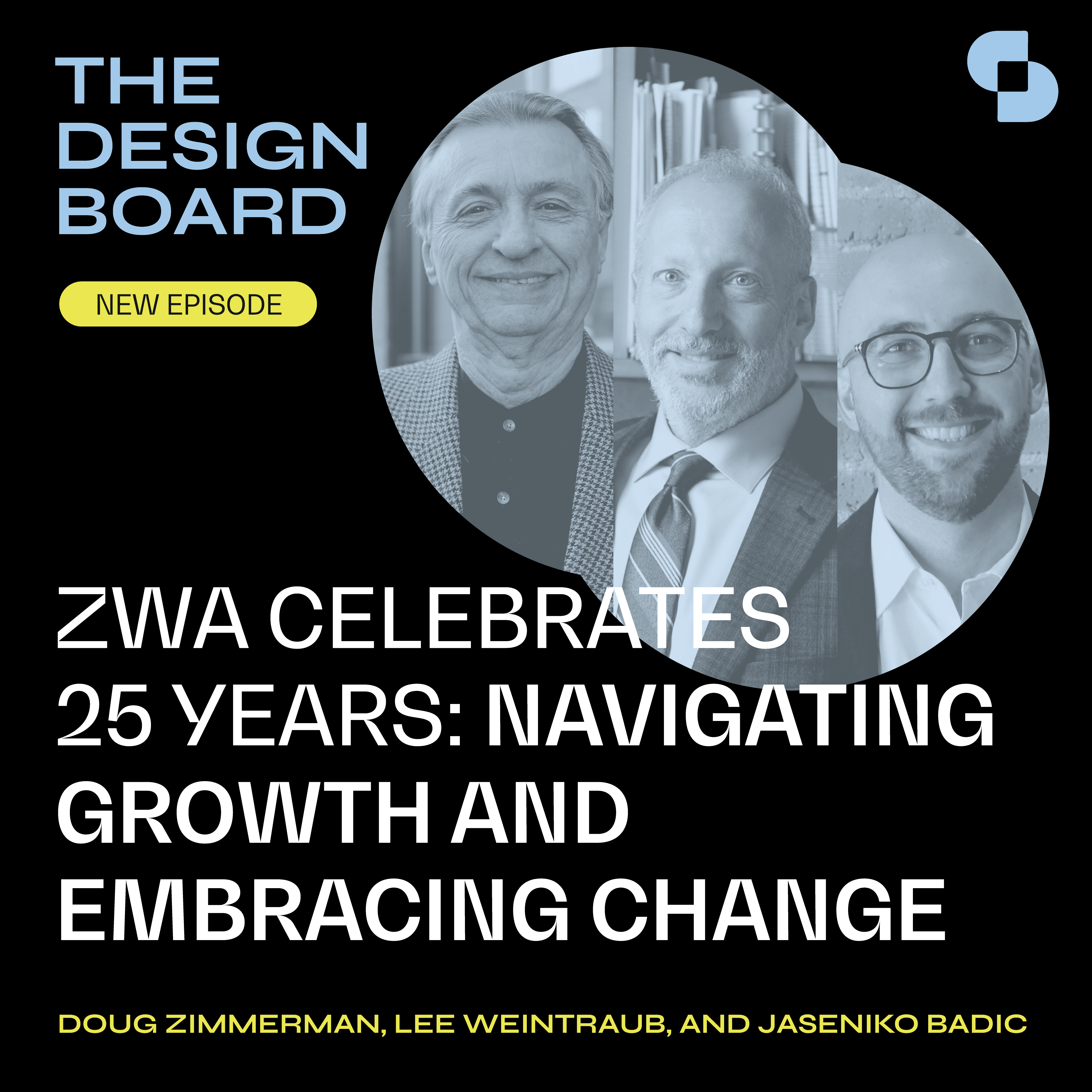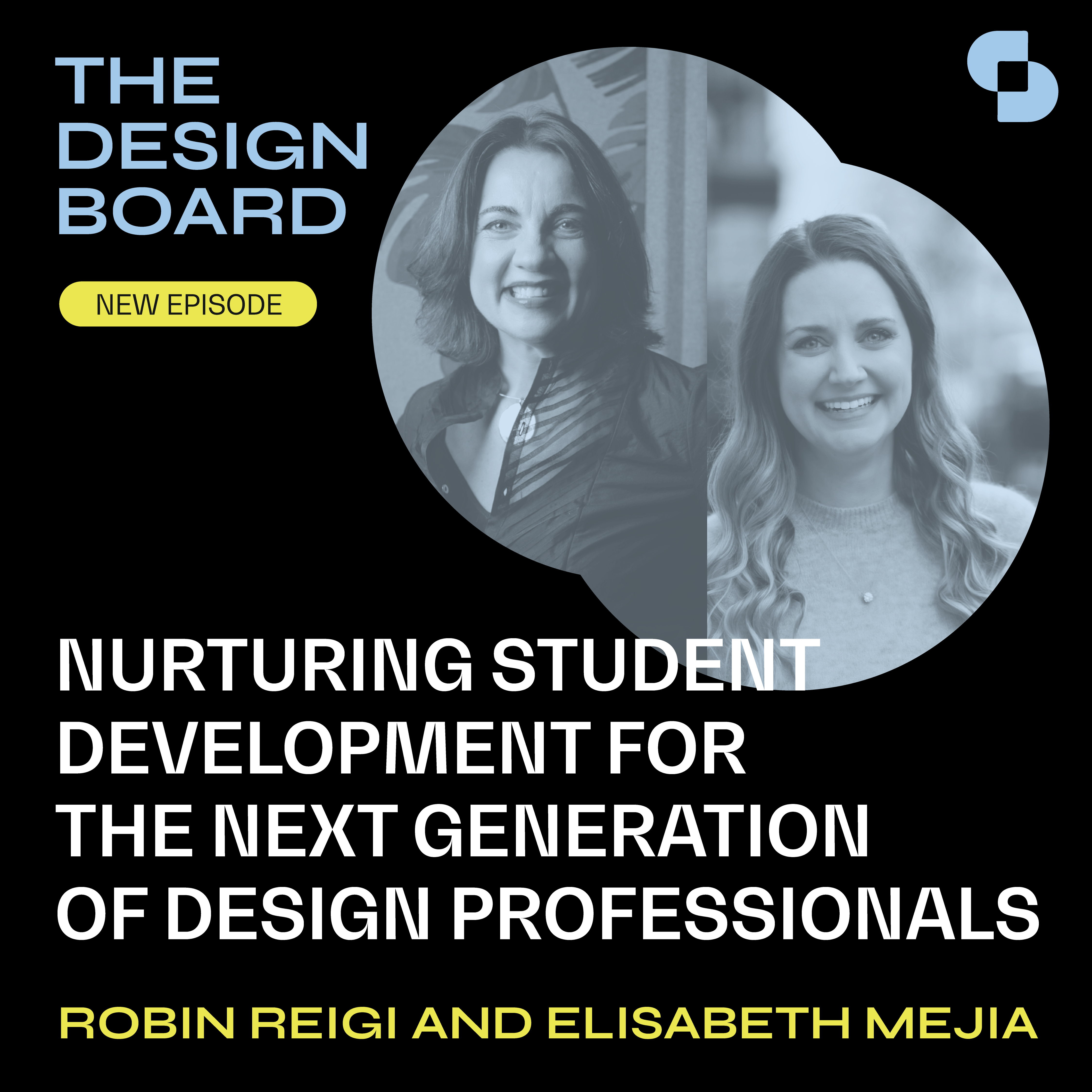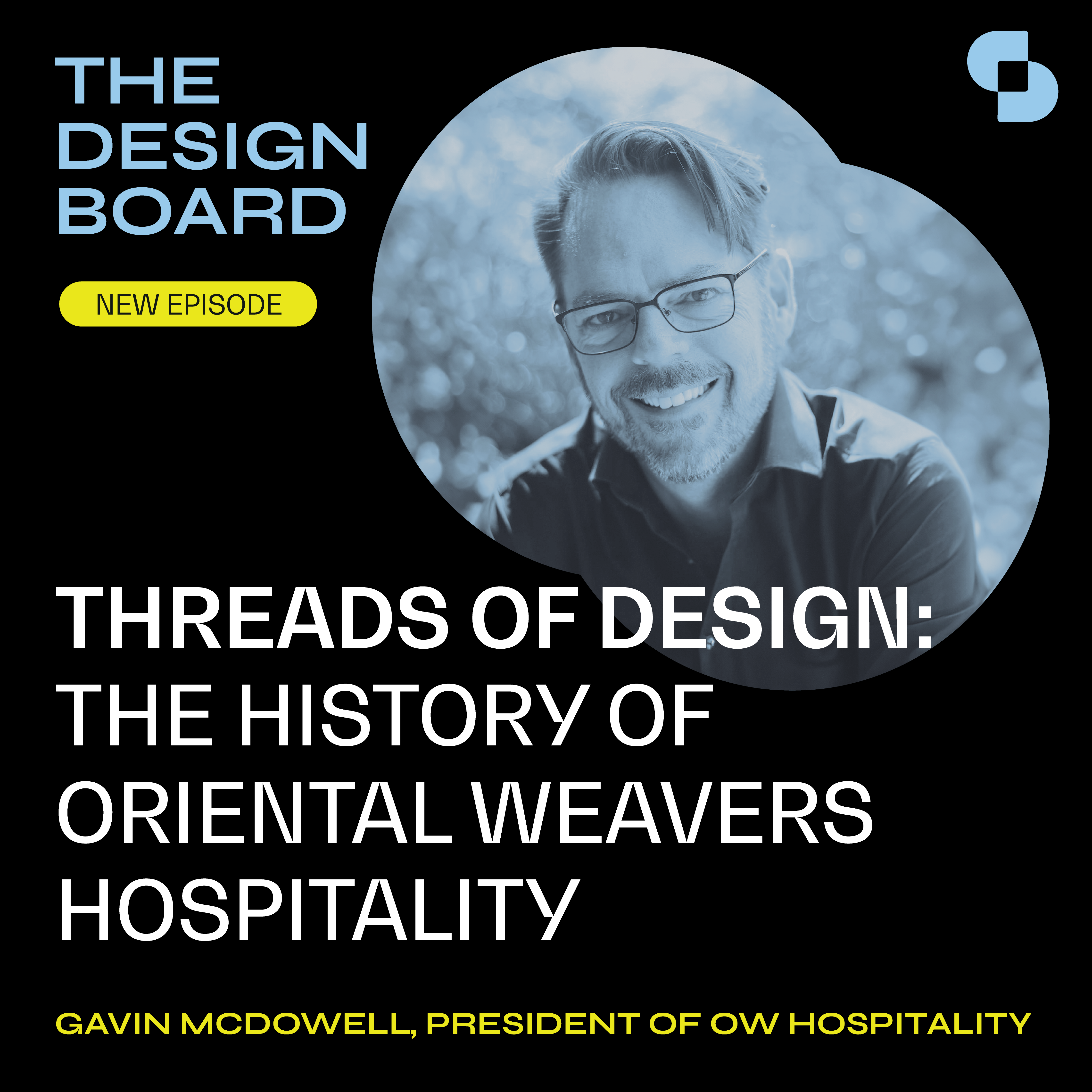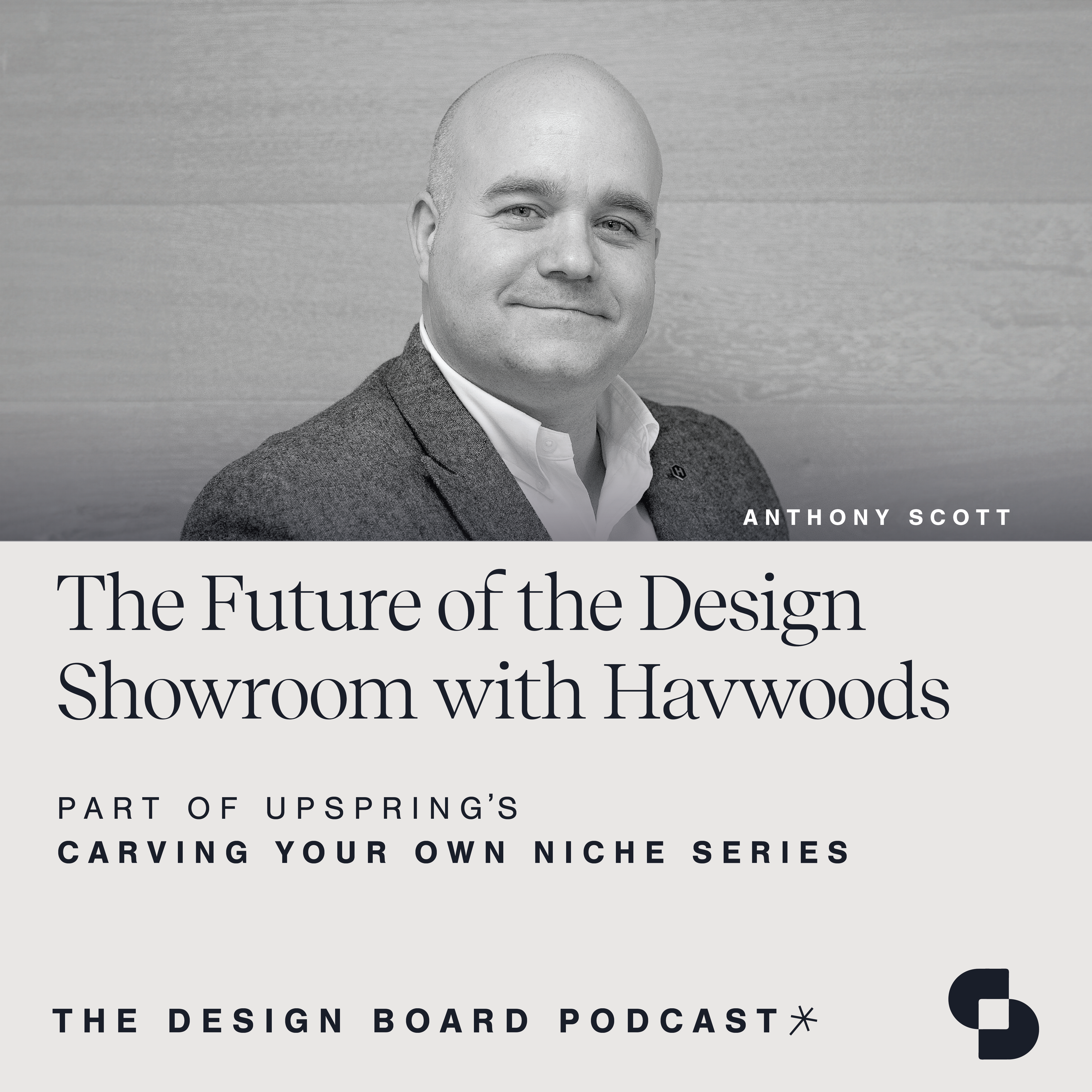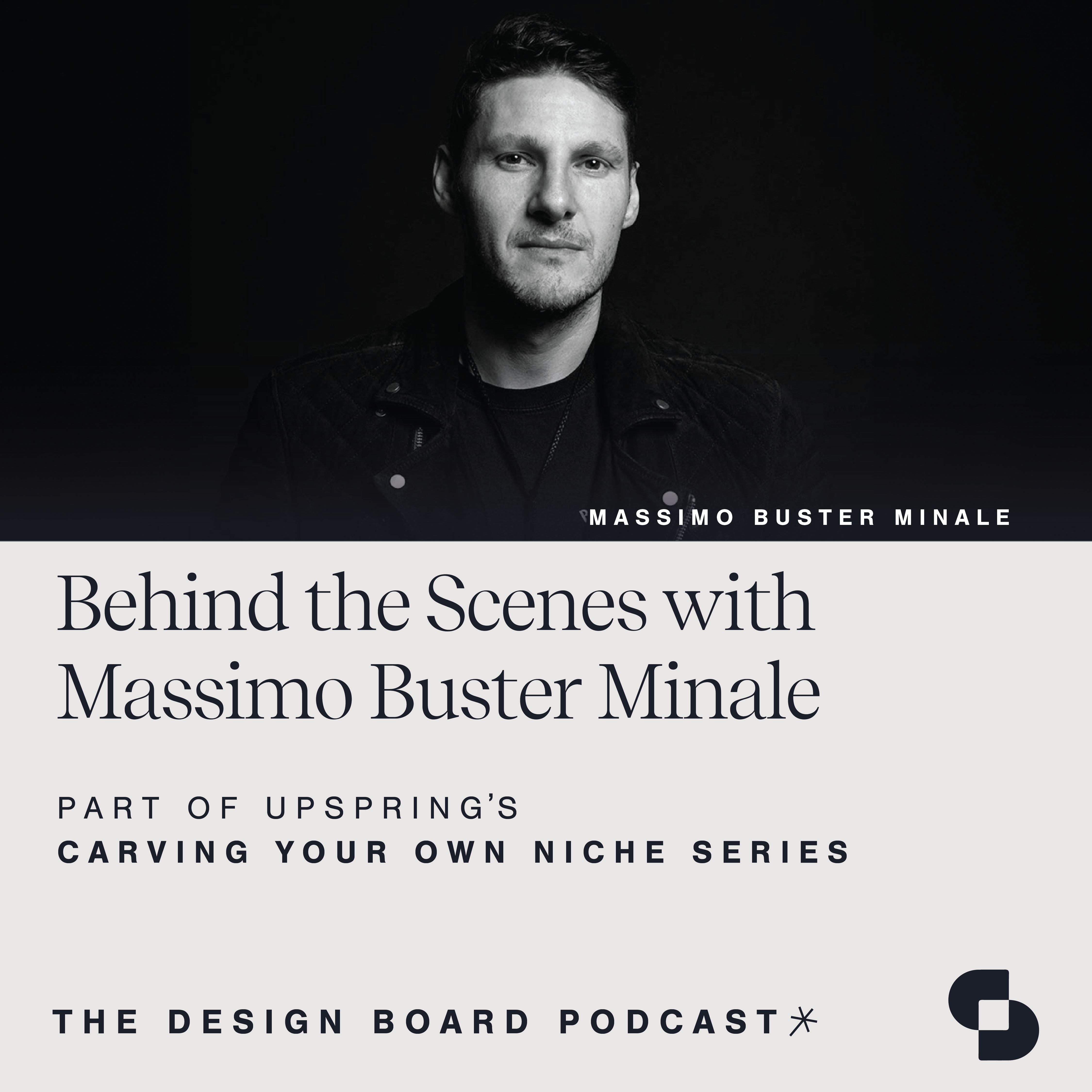Join us for an enlightening episode of The Design Board as we embark on a journey into the captivating world of sustainable luxury design with the visionary Laurence Carr. In this episode, we explore Laurence’s incredible odyssey, from building her own design firm from scratch to the launch of Studio Laurence, a luxury, sustainable home goods brand that defies convention.
The Design Board, by UpSpring, is a proud member of SANDOW Design Group’s SURROUND Podcast Network, home to the architecture and design industry’s premier shows.
Tiffany Rafi:
Welcome to the Design Board, a podcast created by the team at UpSpring that focuses on design, development, and everything in between. We invite innovators in our industry and explore topics that support your growth in every way. The Design Board is a proud member of Surround, a podcast network from Standout Design Group, featuring the architecture and design industry’s premier shows. Check it out at surroundpodcast.com.
Welcome to today’s episode of The Design Board, a podcast by UpSpring that focuses on design, development and everything in between. Today I am joined by the inspiring Laurence Carr, a trailblazer in sustainable design. Laurence Carr is a regenerative designer and circularity expert, a charismatic and passionate circularity advocate. Laurence is also a sustainability ambassador for Maison & Objet, and recently launched Studio Laurence, a sustainable home goods brand specializing in mindful luxury created in collaboration with Nature’s Legacy.
Today, we dive deeper into her remarkable journey and learn how sustainability can seamlessly blend with luxury in the world of design. All right, well let’s dive right in. Laurence, can you share with us the journey of building your own design firm, Laurence Carr, Inc. from the ground up? What inspired you to embark on this path?
Laurence Carr:
Well, first, thanks for having me. It’s great to be here. So I really consider myself as a global citizen. I lived, so far, on four continents and seen the effects of many cultures on their environments, for better or worse. These experience has deeply shaped my worldview that early in my design career, I learned more about the harmful impact of the build environment, design and furnishing industries on our earth’s resources, which truly ignited my passion for environmental sustainability in the field, and also inspired me to create my own firm dedicated to responsible regenerative design.
So this sense of responsibility extends into my personal and professional mission, and is also truly reflected in everything I do, which is why I was moved to become an advocate for sustainability and circularity beyond my own firm and across the industry. I also feel confident that with the right education and efforts to raise awareness, we could be a large part of a solution to turn things around and lead other industries toward a more sustainable, a more healthy future. And truly, I’m honored to be a large part of this vital movement.
Tiffany Rafi:
That’s incredible. I think there is really so much to take from travel and culture that can really inspire moving the movement forward so much faster. So I think that is really, really incredible. Congratulations on the launch of Studio Laurence. Can you tell us a bit about what inspired you to create a luxury sustainable home goods brand and what sets it apart from traditional home goods that are on the market?
Laurence Carr:
Yes, of course. With the launch of Studio Laurence and its first capsule collection, we really are solidifying the fact that investing in sustainable materials and manufacturing processes does not negate quality. The studio’s mission is to really design with finite resources in mind and produce contemporary artful objects and furnishings in harmony with nature and not at its expense.
So I created a capsule collection of cultural and handmade vessels that employ cutting edge technologies that prioritize circular materials and champion conscious consumerism. So to that end, we frequently collaborate with like-minded manufacturers from different parts of the world to embrace our sustainably minded ethos without really compromising value or artistry. Hence, our collaboration with Nature’s Legacy for the vessels.
Our materials are certified by Cradle to Cradle, [inaudible 00:04:19] and the Sustainable Furnishing Council and other third party certifications, and they are manufactured by Nature Legacy, which is based in the Philippines, and they are the first B Corp certified company in the Philippines.
I also think that we really decided to do that. I really decided to collaborate with and to create subsequent collections with other manufacturers, because too often the word luxury, or the theme of luxury, is associated with excess and Studio Laurence offers a new, more elevated consciousness behind luxury home goods.
Tiffany Rafi:
Let’s chat through the materials and the process that are used in your partnership with Nature’s Legacy. The collaboration is incredibly fascinating. I’d love to understand more behind the sustainable materials and the process that are being used in this partnership.
Laurence Carr:
Absolutely. That’s a fantastic question. As a certified B Corp, Nature Legacy’s processes are often zero waste, highly circular, and in alignments with number 15 or actually 15 of the 17 United Nations sustainable development goals, which is of high importance to me as a member of a United Nations conscious fashion and lifestyle advisory committee.
And I can talk about this later, but to answer your question, Studio Laurence’s vessel collection is manufactured with unique biomaterial innovations from Nature Legacy, that are as lightweight as they are highly durable, and they also promote that harmony between nature and everyday objects. So one material is called STONECAST, and this material offers the grandeur of natural limestone with a durability brought about by an innovating manufacturing process. This material is handmade from natural crushed stone and dry stamped into a mold to stimulate how the earth makes limestone.
Another material is called the new cast. This one has the distinction of being archived in material connection as one of the world’s most sustainable materials. It is a patented re-engineered recycled paper based composite that offers a flexible and practical alternative to traditional finite materials like stone and metal. New cast can mimic most natural textures while being 100 times more lightweight, durable, and recyclable. And another example is NATURECAST. NATURECAST won the 2015 Gold Invention Award in Geneva, Switzerland. It is a biodegradable and recyclable product material made from rescued agro forest debris held together by a proprietary water-based binder. So as you can see, these are fantastic materials to work with.
Tiffany Rafi:
No, absolutely. You’re not just a designer. You also serve as a sustainability ambassador for Maison & Objet and sit on the advisory board for the Conscious Fashion and Lifestyle Network. Can you tell us about your work in advocating sustainability on a broader scale, considering your role in these influential positions? How do you make change and how are these important?
Laurence Carr:
Yes. Yes, of course. It’s been a tremendous honor for me to share my expertise in regenerative and circular design, whether on large stages or in small groups. Sustainability has been on everyone’s lips for a few years now, but it’s not making enough of a dent in our mitigation of climate change. It is still really, truly misunderstood, undervalued, let’s say, and underrepresented, especially in the build environment industry, which we know now because everybody’s talking about this. The build environment industry generates nearly 50% of annual global CO2 emissions. That is a very, very large number. Circularity takes sustainability several steps further. I’m really passionate about the circular economy and circularity. And this has the potential for a far more potent impact than just sustainability alone. And yet, it really remains rather than an unknown concept. My mission is to raise awareness about what circularity is, why it matters, and how we can apply the concepts of a circular economy to the build environment.
The circular economy holds promise for achieving several of the United Nations sustainable development goals, including energy, economic growth, sustainable cities, sustainable consumption and production, climate change issuance and life on land. So when we know that over 70% of a product’s lifecycle costs and environmental footprint are data mined during its design phase, by planning for a more circular future, we can really reduce carbon emission, restore nature’s biodiversity, and make a tremendous positive impact on climate change. And that starts by really planning for the very, very beginning of a design phase, the concept phase. Of the selection of materials, how it’s going to be designed, and what’s the life and cycle of a product. And it all starts with awareness and education. So that’s how we provoke the adoption of these methods and inspire people, I think consumers and companies to take action.
Tiffany Rafi:
Well, you are definitely championing the thought leadership and using your platform to really move the mission forward, so I think that’s incredible.
Laurence Carr:
Thank you.
Tiffany Rafi:
Speaking of showcasing, you’ve recently showcased your work at Paris Design Week and also curated a design activation titled Circularity in Action Denmark in January. Can you share your experiences and the significance of such platforms for promoting sustainable design? How are they relevant?
Laurence Carr:
Well, this is such a good question. Being part of these large scale industry trade shows and events is a wonderful way to reach large audiences and truly spread awareness and interest in circularity in an efficient and exciting way. I believe that the best way to educate is through storytelling, which is why I particularly enjoy curating and designing activations at trade fairs or at large public events, B2B with B2B or B2C audience that are immersive and impactful experiences for those who visit.
It’s one thing to tell people how great sustainable and circular design can be and why it matters, but I find it’s much more powerful to show them, to create immersive experiences, which are innovative way to open people’s mind, dispel myths and truly inspire action. Events like Maison & Objet in Paris are where trends are set and movements are made, so it follows that circularity and sustainability must be elevated and celebrated to help everyone who visits, whether they’re rookies in the industry or long-term professionals, understand the importance of adopting these methods in their own work and spreading awareness in their own communities.
Tiffany Rafi:
You’ve successfully built a world that incorporates sustainability without sacrificing luxury. That is quite difficult. Could you share some insight on how others can follow a similar path in their endeavors?
Laurence Carr:
Yes, absolutely. I do believe it’s all about education and action. Designers can learn more about sustainability and circularity via resources like the incredible Ellen MacArthur Foundation, the International Living Future Institute, which is in the US. Ellen MacArthur Foundation is in the UK.
There are organization like the Well International Institute that talks all about wellness, but then there’s a crossover with sustainability. The Sustainable Furnishing Council is a very important organization throughout the furnishing industry in the US and they’re based in North Carolina. Designers can also learn about healthy materials through the amazing Healthy Material Lab at Parsons, The New School. It’s a fantastic online course that you can take anytime from anywhere and it’s just extremely educative. There’s also Mindful Materials, the organization that just launched a common framework and then there is a Material Bank ordering online your materials and then contributing to carbon emission by just ordering materials through that platform.
It’s incredible. So many manufacturers and brands join Material Bank by Sandow. So manufacturers can definitely improve their transparency about how they source and craft products. Also, how they seek out third party certifications and do lifecycle assessments to understand the impacts of their processes. And I do think that consumers can shift from viewing luxury as excess, but rather make really conscious consumerism and essentialism a part of their practice, instead.
They can support companies whether you shop for food, you shop for fashion, you shop for lifestyle, and you shop for interiors. Engaging really companies that are engaging in high fidelity sustainability practices with clear transparency standards. And I think there’s also so much we can all do to be part of this solution without sacrificing comfort, quality, or style. It’s just about truly digging deeper, making small commitments. We can do baby steps to start with, and the more we learn, the more we can truly embrace a new lifestyle.
Tiffany Rafi:
Do you have any recommendations on what some of those baby steps might be? What do you look for when you’re sourcing materials or creating product?
Laurence Carr:
I really look at third party certifications. How was the product made? Where was it made? What is that material? Where does it come from? These are the first question I ask myself if I can’t find the information through a third party certification label that is on a clove, on food, on materials, products, interiors, furniture, textiles. I just wonder why it’s not there. To me, there’s a lack of transparency.
So that’s one of the first thing. It’s really how was it made, where was it made, and also who made it. It’s important to understand who made it and which communities are taken care when they make the products. It is great to just always look for artisans made local communities, but are they taken care of? That’s really important. Whether they’re local or they’re from far away.
Tiffany Rafi:
That was really helpful. Thank you. I think sometimes sustainability can feel so overwhelming.
Laurence Carr:
Absolutely.
Tiffany Rafi:
If you don’t even know where to start. I love that you say, just take baby steps. Anything is progress, and I think a lot of times, many don’t know what to look for, and so they’re taking the communication as something being sustainable at face value, when in reality there are very little things that are signals that you can use as a filter to begin with that sort of help to just make your choices, even if they’re not completely sustainable, just more and more sustainable so that there’s progress being made.
Laurence Carr:
Absolutely. Absolutely. Yes, yes. And then our everyday habit. So remembering to turn off the lights. How much water do I use? Do I really need to use this much water? Water is now the new gold currency. It’s going to be sparse more and more throughout the world, and how do I really need to buy more of this? Again, I say food.
Whether it’s fashion or clothes for our lifestyle or our products. It’s really embracing that lifestyle and thinking about how can I reuse what I have. Even in a fashion, we go back to past fashion from the eighties, seventies, and there’s a lot of antique shopping and recycled clothing that are really, really in trend, and I think there’s value to it. Let’s not just put more in the landfill. We can’t. We can’t afford that.
Tiffany Rafi:
No, absolutely. Again, baby steps. My five-year-old and two-year-old were brushing their teeth together last night, and my five-year-old turned off the faucet and told my two-year-old, save the fishies. And it’s those little things-
Laurence Carr:
Absolutely-
Tiffany Rafi:
That make a big impact, and it starts young. So again, it’s those baby steps. It’s not just about necessarily… You think about furniture tile and flooring and all the things in a project that live in a project, but I was on a wellness panel yesterday at the design center, and one of the designers in the audience brought up this amazing thing that I had never thought of saying, and I wish I had a moment to get her name, but she was saying that when they’re styling sometimes for a shoot that she’ll see team members or owners, operators, homeowners running out and saying, oh, I’m going to run to Target and grab a blanket for the shoot, and you’re like, this isn’t just about creating sustainable projects that you then run out and buy a blanket at target.
It’s about sort of seeing it through. It’s not just about the objects that are in that built environment, but also the sanctity of the objects. That blanket should be sourced from a local artisan. It’s something sacred where you’re wrapped in a blanket. She said it so beautifully. She was like, “You’re wrapped in a blanket when you’re born and in many cultures it’s the last thing you’re wrapped in also.” So really taking a moment to appreciate that, that sustainability, the uniqueness, and taking a moment to sort of source things that are special, down to the blanket, is really important because oftentimes those are the materials that are the most mass produced.
Laurence Carr:
Absolutely. Absolutely. And in really recognizing the object or the textile or the furniture or that piece you just bought, just recognizing the artisan work, the craftsmanship, and the more you recognize, the less maybe you think about quantity, but you think more about quality, and having maybe one great piece rather than 10 that they have been purchased less mindfully, let’s say.
Tiffany Rafi:
No, absolutely. And we don’t realize it ourselves. I wouldn’t personally think of the blanket. I wouldn’t go that far, I don’t think. So, it was nice to have someone else point it out.
Laurence Carr:
Absolutely.
Tiffany Rafi:
Building a luxury sustainable home goods brand is unique and an endeavor for sure. Can you share some of the challenges you faced marrying sustainability with luxury as it relates to the brand and how you’ve navigated these challenges?
Laurence Carr:
Yes. Yes. In the past, I agree that sustainability and luxury, they really seem that opposite ends of a spectrum because in the early days, sustainability design things lacked refinements. We used to just really associate sustainability… Well in terms of furniture, with a sort of brown furniture or something like that. But these days, thanks to so much scientific innovation, you have biomaterials. You really have a plethora of materials and processes to make almost anything sustainably, while we are still retaining high-end luxurious qualities. For instance, for our launch, partnering with Nature Legacy made this possible. We brought our luxury aesthetics for vast, stunning, yet sustainable biomaterials to meet our standards of design, of function and impact. To us, this was fantastic to really pair luxury and sustainability.
Tiffany Rafi:
In the realm of sustainable design, what are some of the most innovative or groundbreaking projects you’ve come across recently?
Laurence Carr:
Sometimes I feel like a broken record, but I’ve been really inspired by biomaterials, recently. I met so many creative innovators who are crafting unbelievable materials and products using waste and/or highly renewable natural resources like seaweed, mycelium, and even fishnets to make materials, to make furniture, to make proprietary materials. One designer in the Netherlands is taking toilet paper and bacteria from the sewer systems to create unbelievable [inaudible 00:21:46] products and bioplastics, for example. Can you imagine that?
Tiffany Rafi:
That’s incredible. Wow.
Laurence Carr:
And then there’s another company who is using plastic waste from insulin cartridge manufacturing to create these durable city benches. There really seems to be no limit to creative ways we can give healthy and functional new life to waste and renewable resource. We just have to just keep our eyes open. Anywhere in the world. At the moment, we see from Japan, I heard about proprietary materials that can be biodegradable in the sea after 90 days that’s used in 3D printing in Scandinavia. You see all these new products. It’s a mix of whatever you can use for the sea to nature, which happens anywhere in Europe.
In France, I just came back from Paris Design Week and Maison & Objet, so many products. I remember seeing someone with a textile who just is upcycling textile and is making it cardboard acoustic sound board. I feel like the imagination is endless. The creativity can be endless, if we know how to use our finite resources. That’s the key is that just let’s stop using these finite resources of the earth and just use what is already existing and be very creative.
Tiffany Rafi:
No, that’s incredible. I am seeing the time investment and the prioritization of using recyclable materials and sort of pushing forward in this space. I feel like it’s gaining momentum so quickly. It’s really incredible to watch.
Laurence Carr:
Absolutely. I think we’re at a unique time right now.
Tiffany Rafi:
Let’s talk a bit about the coming years. Can you share any future plans or projects you have in store and your mission to promote sustainable luxury?
Laurence Carr:
Well, I’m already hard at work on a few exciting new design collaborations for our next product collections, unfortunately, I can’t share yet, but that’s okay. So stay tuned for more on that. I’m also consulting with brands on sustainability circularity to really enhance their own sustainability standards from the ground up. And I’m partnering with United Nations, a few networks, and other sustainable brand partners to promote and produce educational exhibits and events in the next year or so. And I also have a couple of interior design projects, of course. So we’re trying to fit it in all in the next two to three years. That’s what’s ahead, so please keep an eye out for news as things developed. They will develop.
Tiffany Rafi:
Great. We will definitely be watching. We generally like to ask, at the very end, if you have any advice to share for anybody who’s listening. It can be on anything from navigating the world of sustainability to sourcing products and anything that you’d like to share.
Laurence Carr:
Yeah. No, that’s a lovely question. I will continue to speak about sustainability and circularity. I’ll just say really, education is where it starts, and it’s never too late. We are wrapping up Climate Week at the UN General Assembly. It’s a 78 right now in New York City at the United Nations headquarters, and we have to keep being hopeful. We have to keep thinking about the legacy of what happens for our children, grandchildren, and generations to come. So what can we do?
I’d say it’s so important to keep educated and it’s so easy now. It’s much easier than five years ago, than 10 years ago. There is a lot of information online, but the most reliable ones are the ones that really, such as I mentioned, Ellen MacArthur Foundation. That’s a great place to start, and to understand what sustainability and what circularity are about. It’s a business proposition. It’s a win-win from an economic standpoint, as well as for the benefit of the people and the planet.
Tiffany Rafi:
Amazing. Thank you so much. Would you like to share where you could be reached if anybody likes to get in touch?
Laurence Carr:
Yes, absolutely. So we have our website, laurencecarr.com. It’s L-A-U-R-E-N-C-E-C-A-R-R.com, and there is a tab there. You can just leave a message or you can send us at [email protected]. New message, and we have our Instagram at Laurence Carr, Inc. We also have our Studio Laurence, which is studiolaurence.com. That’s for luxury home goods, and you can find us on LinkedIn at either Laurence Carr or Studio Laurence.
Tiffany Rafi:
Beautiful. Thank you so much again for taking the time to chat with me today. We know where to find you. Thank you.
Laurence Carr:
Thank you so much, Tiffany. It’s been a pleasure.
Tiffany Rafi:
Thank you so much for listening in with us today. We hope you leave inspired by the ideas in today’s episode. For more, follow UpSpring on LinkedIn and Instagram, and don’t forget to check out the amazing lineup of shows brought to you by The Surround Podcast Network at surroundpodcast.com.

